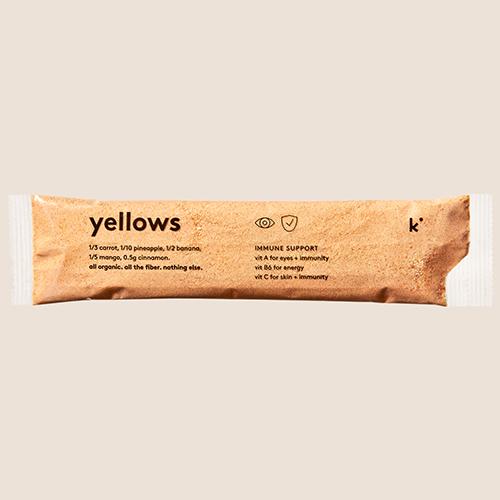Why we love… oranges
Sweet, refreshing, and infinitely juiceable, when it comes to oranges, we’ve historically preferred the OG to OJ. But our newest smoothie might change things.
Sweet, refreshing, and infinitely juiceable, when it comes to oranges, we’ve historically preferred the OG to OJ. But our newest smoothie might change things.
Among the most consumed fruits globally – and the source of what’s got to be the most iconic juice in the world – there are plenty of reasons we just freakin’ love oranges and in all likelihood, you do too.
The story of the common orange is one of continents, empires, sunny climates, and an insatiable demand for juice… oh, and condensed frozen cylinders of said juice
A brief history of this super citrus
The orange as we know it today has been written about since 340 BCE, and came into existence through domestication as a hybrid between the mandarin and the pomelo. This process is thought to have taken place somewhere in the vicinity of present day southern China or northeast India.
From there, traders from the Persian Empire likely introduced sweet oranges to parts of the Roman Empire around 100 BCE, where the orange tree happily took root in the Mediterranean climates of North Africa and the Iberian Peninsula. And come the year 1500 or so, Spanish colonizers brought the orange to the Americas, where the crop continues to thrive to this day – particularly in Florida and in Southern California, where oranges grown for juicing purposes are major drivers of the local economies.
Today, about 50 million metric tons of oranges are produced annually – roughly 14 pounds per person on earth. Oranges account for about half of all citrus fruit grown, and somewhere in the ballpark of 80% of those oranges are grown to be juiced or made into various extracts.
Pressing on: from fresh-squeezed to concentrate
Despite its ubiquity in Western countries, orange juice as most of us know it and drink it is a relatively new phenomenon. Originally exclusively of the freshly-squeezed variety, OJ was somewhat of a luxury – a sweet, seasonal treat served with breakfast for those of privilege, who happened to live near an orange grove. By the 1920s, canned OJ began appearing on market shelves, but didn’t take off until the 1940s.
The concept of orange juice from concentrate was developed during World War II, when American soldiers balked at the Vitamin C supplements in the form of lemon crystals they were given to ward off scurvy. The federal government set out to create a Vitamin C-dense substance that the troops could choke down, and through vacuum-sealed evaporation techniques and removal of the fiber-rich pulp, orange juice can be distilled down to a syrupy liquid made of about 65% sugar. Unfortunately for picky soldiers, this formulation didn’t come into existence until the end of the war, but orange juice from concentrate quickly became a staple for America’s vast consumer class.
What are the nutritional benefits of (whole) oranges?
Suffice to say, the more nutritious way to enjoy an orange is by peeling and eating a fresh one. In that form – or if incorporated into one of our smoothies, with all its fiber included – an orange is a real nutritional dynamo, a phenomenal source of energy (think back to your youth soccer practices: what fruit was likely fueling you as you ran around all willy nilly? Exactly.) and absolutely delicious.
Though a variety of oranges exist, and their hyper-specific nutritional breakdowns vary slightly, your standard, large orange is going to provide you with:
About 5 grams of fiber – good for roughly ⅕ of your daily requirement
Over 100% of your vitamin C needs
Nearly 240 grams of potassium
A healthy amount of fluid, as oranges are about 85% water
And antioxidants in the form of carotenoids and phenolics
What kencko flavors include oranges?
We’ve effused over 500 words about oranges, so it’s only logical for you to wonder which of our smoothies owe their high Vitamin C content or sweet-tangy punch to the world’s preferred form of citrus.
Until quite recently, corals was our only orange-featuring flavor. Don’t get us wrong – we adore corals, and there’s a reason it’s among our most popular smoothies. But we’ve long wanted to put out something that was orange-forward, and not just orange-accented.
It’s taken our R&D team a while to perfect a recipe that lives up to our love of oranges, but we’re finally able to offer you our latest flavor, the aptly named oranges! In addition to its obvious namesake ingredient, oranges is supercharged with pineapple, papaya, rhubarb, and turmeric, for a more tropical twist on the world’s favorite fruity beverage. Best mixed with chilled water, it’s reminiscent of a super refreshing, pulpy juice - except you know you’re getting all that gut-friendly, sugar-regulating fiber from real, whole fruits.
Give our latest flavor a taste, but be warned: it might just ruin conventional orange juice and its nutritional shortcomings for you forever.
there's more good content where that came from
